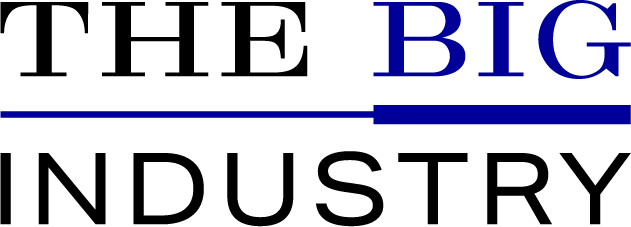The Power of Continuous Learning in Cultivating a Positive Organizational Climate
Unlocking Endless Possibilities through Perpetual Progress
Continuous learning is a fundamental pillar for personal and professional growth. In an ever-evolving world, individuals and organizations that embrace the power of perpetual progress are best positioned to unlock endless possibilities and stay ahead of the game. To survive and thrive in the modern era, embracing continuous learning is not just an option, but a necessity.
The Importance of Continuous Learning in Shaping Organizational Culture
Organizational culture refers to the shared values, beliefs, and behaviors that characterize a workplace. It plays a crucial role in shaping employee engagement, innovation, productivity, and overall success. Continuous learning acts as a catalyst in fostering a culture of growth and development.
When employees are encouraged and supported in their pursuit of new knowledge and skills, they feel valued and empowered. This has a positive impact on their motivation, job satisfaction, and loyalty towards the organization. Furthermore, an organization that promotes continuous learning attracts top talent, creates a competitive advantage, and adapts swiftly to changing market dynamics.
The Key Elements of an Effective Continuous Learning Culture
To create an effective continuous learning culture within an organization, several key elements must be considered:
1. Leadership Commitment:
Leadership plays a crucial role in setting the tone for continuous learning. When leaders prioritize and actively participate in ongoing learning and professional development, it sends a powerful message to employees that growth is a shared value. This commitment trickles down and becomes embedded in the organizational fabric.
2. Learning Opportunities:
Provide employees with a range of learning opportunities, including training programs, workshops, conferences, and access to online resources. Tailor these opportunities to meet the diverse needs and learning styles of individuals within the organization. Offering mentorship programs and establishing communities of practice can also facilitate knowledge sharing and collective learning.
3. Learning as Part of Performance Management:
Integrate learning and development into the employee performance management process. Incorporate continuous learning goals and metrics into performance evaluations. Recognize and reward individuals who actively engage in continuous learning and demonstrate the application of new skills and knowledge in their roles.
4. Supportive Infrastructure:
Invest in the necessary infrastructure and technologies to enable continuous learning. This includes providing access to learning management systems, e-learning platforms, and other tools that make learning resources readily available and easily accessible. Foster a culture where employees are encouraged to experiment, take risks, and learn from failures as part of their growth journey.
Mitigating Challenges and Fostering a Continuous Learning Climate
While continuous learning brings immense benefits, it is not without its challenges. The following considerations are essential in creating a supportive environment for perpetual progress:
1. Foster Psychological Safety:
Create an atmosphere where employees feel safe to voice ideas, ask questions, and make mistakes without fear of humiliation or retribution. Embrace a growth mindset that encourages experimentation, innovation, and continuous improvement.
2. Align Learning with Organizational Goals:
Connect learning initiatives to the broader organizational strategy. This ensures that learning efforts are aligned with the organization’s objectives and address critical skills gaps and future needs. When employees understand the relevance of their learning journey to the organization’s success, it enhances their motivation and commitment.
3. Continuous Feedback and Reflection:
Establish a culture of feedback and reflection that promotes ongoing learning. Encourage regular dialogue between managers and employees to provide constructive feedback, identify learning needs, and celebrate milestones. Implement mechanisms for self-assessment and individual development planning to support continuous improvement.
4. Embrace Diversity and Inclusion:
Recognize the wealth of knowledge and perspectives that diverse teams bring. Foster an inclusive learning environment where individuals from different backgrounds can learn from one another. Encourage cross-functional collaboration and create opportunities for knowledge transfer across departments and hierarchical levels.
Important Information to Consider
When implementing continuous learning initiatives, it is crucial to evaluate their impact and adjust strategies accordingly. Regular assessments of the effectiveness of learning programs and initiatives can help identify areas for improvement and ensure alignment with organizational goals and employee needs. It is also important to create a feedback loop where employees can provide input on the relevance, accessibility, and quality of learning opportunities.
Moreover, organizations should prioritize developing a learning culture that goes beyond formal training programs. Encouraging peer-to-peer learning, knowledge sharing, and fostering a culture of self-directed learning can significantly enhance the overall learning experience and promote continuous improvement at all levels.
Summary
In the dynamic and fast-paced world we live in, continuous learning is vital for both individuals and organizations. Embracing perpetual progress unlocks endless possibilities and shapes a positive organizational climate. By integrating key elements of an effective continuous learning culture, such as leadership commitment, learning opportunities, and supportive infrastructure, organizations can foster a climate that nurtures growth, innovation, and adaptation to change. Mitigating challenges through fostering psychological safety, aligning learning with organizational goals, encouraging continuous feedback, and embracing diversity and inclusion, organizations can create an environment that maximizes the potential of their employees. With a focus on continuous improvement and a commitment to lifelong learning, organizations can thrive in an ever-evolving world.
- Unleashing the Power of Progress: Crafting an Astounding Growth Strategy - 17 de agosto de 2023
- Evolution Unleashed: Unlocking the Power of Iteration - 17 de agosto de 2023
- Unleashing Unlimited Potential: The Power of Scalability - 17 de agosto de 2023




